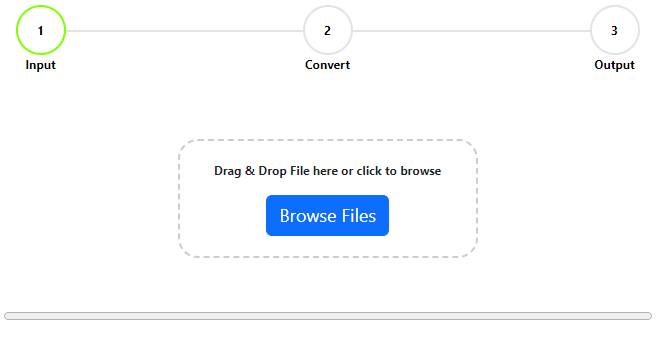A Beginner Guide To .pyt Files: The Power of Python Toolboxes in ArcGIS
While many GIS professionals are familiar with the standard toolboxes and geoprocessing tools available in ArcGIS, there’s a lesser-known but incredibly powerful feature: the Python Toolbox, represented by the .pyt file extension. In this blog post, we’ll delve into the world of .pyt files, exploring their structure, advantages, and how they can revolutionize your GIS workflows.
Working with ArcGIS? You should be listening to our podcast!
What is a .PYT File?
A .pyt file, or Python Toolbox, is a custom toolbox created using Python for ArcGIS. Unlike the traditional .tbx toolboxes crafted using ArcGIS Desktop’s graphical interface, .pyt files are written in Python code, offering a more flexible and programmable approach to tool creation.
Structure of a .PYT File
At its core, a .pyt file is a Python script. It consists of:
- A main
Toolboxclass that represents the toolbox itself. - One or more tool classes, where each class corresponds to a specific geoprocessing tool.
- Methods within each tool class that define parameters, execute the tool’s logic, handle validation, and more.
Why Use .PYT Files? The Advantages
- Flexibility: Being Python scripts,
.pytfiles grant developers the full power of Python. This means you can integrate external libraries, perform complex computations, and even connect to external databases or APIs. - Portability: As plain text files,
.pytfiles are easy to share, distribute, and manage under version control systems like Git. - Seamless Integration: Despite being custom tools, those defined in a
.pytfile can be used within ArcGIS just like any built-in geoprocessing tool. This ensures a consistent user experience. - Customization: With
.pytfiles, you can tailor tools specifically for your needs, ensuring that the tool’s parameters, outputs, and behavior align perfectly with your project requirements.
Getting Started with .PYT Development
For those keen on crafting their own tools, understanding the development process of .pyt files is crucial. Let’s delve deeper into the nuances of creating a Python Toolbox.
1. Setting Up Your Environment
Before diving into .pyt development, ensure you have the following:
- ArcGIS Pro or ArcGIS Desktop: While both support
.pytfiles, ArcGIS Pro uses Python 3.x, whereas Desktop uses Python 2.x. This distinction can affect library compatibility and syntax. - Python IDE: While not mandatory, using an Integrated Development Environment (IDE) like PyCharm, Visual Studio Code, or even IDLE can make coding, debugging, and testing more efficient.
2. Initializing the Toolbox
Every .pyt file starts with the definition of the main Toolbox class. This class provides metadata about the toolbox, such as its label and alias. Here’s a basic structure:
import arcpy
class Toolbox(object):
def __init__(self):
"""Define the toolbox (the name of the toolbox is the name of the .pyt file)."""
self.label = "My Custom Toolbox"
self.alias = "CustomTools"3. Defining Your Tools
For each geoprocessing tool you wish to create, you’ll define a separate class. This class will inherit from arcpy.Tool and will contain methods that define the tool’s behavior.
A basic tool class structure looks like this:
class MyFirstTool(object):
def __init__(self):
"""Define the tool (tool name is the name of the class)."""
self.label = "My First Tool"
self.description = "This is a custom tool description."
def getParameterInfo(self):
"""Define parameter definitions"""
params = [arcpy.Parameter(displayName="Input Feature",
name="in_feature",
datatype="DEFeatureClass",
parameterType="Required",
direction="Input")]
return params
def execute(self, parameters, messages):
"""The source code of the tool."""
arcpy.AddMessage("Tool executed successfully!")4. Tool Parameters
The getParameterInfo method is where you define the tool’s parameters. Each parameter is an instance of arcpy.Parameter. You can set various properties like:
- displayName: The name shown in the tool’s GUI.
- name: A unique internal name for the parameter.
- datatype: The expected data type, such as “DEFeatureClass” for feature classes.
- parameterType: Whether the parameter is “Required” or “Optional”.
- direction: Whether the parameter is an “Input” or “Output”.
5. Tool Execution
The execute method contains the core logic of your tool. Here, you can use arcpy functions, Python libraries, or any custom code. The parameters argument contains the values provided by the user, and messages can be used to communicate progress or errors back to the user.
6. Testing and Debugging
Once your toolbox and tools are defined, you can add the .pyt file to ArcGIS and run the tools. It’s advisable to test your tools thoroughly, checking for edge cases and potential errors. Using an IDE can help in debugging, allowing you to set breakpoints and inspect variables during execution.
Conclusion
Developing a .pyt file might seem daunting initially, but with a structured approach and a good understanding of the arcpy module, it becomes a rewarding endeavor. The ability to craft custom tools tailored to specific needs can greatly enhance GIS workflows, making the investment in learning .pyt development well worth it.
Frequently asked questions (FAQs) about .pyt files:
What is a .pyt file?
A .pyt file is a Python Toolbox file used in Esri’s ArcGIS software to create custom geoprocessing tools using Python.
How is a .pyt file different from a .tbx file?
While both are toolboxes in ArcGIS, a .pyt file is written in Python, offering more flexibility and programmability. In contrast, a .tbx file is created using the graphical interface of ArcGIS Desktop.
Can I use external Python libraries in a .pyt file?
Yes, you can integrate external Python libraries in your toolbox, provided they are compatible with the Python version used by your ArcGIS installation.
How do I add a .pyt file to my ArcGIS project?
You can add a .pyt file to ArcGIS just like any other toolbox. Once added, the tools defined within the toolbox can be accessed and run.
Is there a specific structure I need to follow when creating a .pyt file?
Yes, a .pyt file typically defines a main Toolbox class and one or more tool classes. Each tool class corresponds to a specific geoprocessing tool and contains methods for parameter definition, tool execution, and other functionalities.
Can I use .pyt files in both ArcGIS Desktop and ArcGIS Pro?
Yes, but be mindful of the Python version differences. ArcGIS Desktop uses Python 2.x, while ArcGIS Pro uses Python 3.x. This can affect library compatibility and syntax.
How do I debug a .pyt file?
Using a Python Integrated Development Environment (IDE) can help in debugging. You can set breakpoints, inspect variables, and step through the code to identify issues.
Are there any limitations to what I can do with a .pyt file?
While .pyt files offer great flexibility, they are still bound by the capabilities of the arcpy module and the Python version used by ArcGIS. Additionally, performance considerations might arise when executing complex operations.
Can I share my .pyt file with others?
Yes, .pyt files are plain text and can be easily shared, distributed, or managed under version control systems.
Do I need advanced Python skills to create a .pyt file?
Basic Python knowledge is sufficient to start with simple tools. However, for more complex operations or to leverage advanced features, a deeper understanding of Python and the arcpy module is beneficial.





